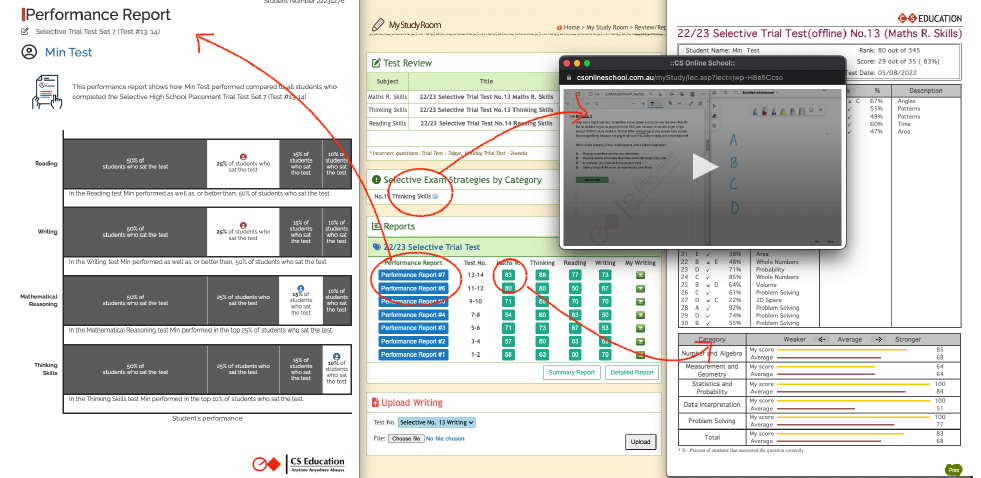Selective Trial Test Course


Selective Trial Test Course
Our Selective Trial Tests Course has been reviewed and restructured to include the Selective Preliminary Course to ensure that they are relevant, suitable and of high quality so that our students are best prepared for Selective Schools Test. This course is a significant part of our program for Year 5/6 students who are enrolled in the Selective High School and Private School Scholarship Tests Preparation Course.
Test information
From 2025, the placement tests for selective high schools and opportunity classes will move from single version paper-based tests to computer-based tests. The computer-based tests will mostly be held in external test centres.
The Selective High School Placement Test has been designed to allow students to demonstrate their abilities across a range of areas, including reading, mathematical reasoning, thinking skills and writing.
In 2024, the placement test is in a paper-based format.
Test Structure
The test consists of four sections and is structured as follows:
| Section | Minutes | Questions | Type | Weighting | |
|---|---|---|---|---|---|
Reading | 40 | 30 | Multiple choice | 25% | |
Mathematical reasoning | 40 | 35 | Multiple choice | 25% | |
Thinking skills | 40 | 40 | Multiple choice | 35% | |
Writing | 30 | 1 | Open response | 15% |
The reading test consists of 30 questions. Students have 40 minutes to complete the test. The questions are based on a diverse range of texts and assess a range of reading skills. The answers are all multiple choice.
The reading test questions are based on different genres such as non-fiction, fiction, poetry, magazine articles and reports.
The mathematical reasoning test consists of 35 questions. Students have 40 minutes to complete the test. The answers are all multiple choice.
The mathematical reasoning test assesses the student’s ability to apply mathematical understanding and knowledge to problems, with questions drawn from a range of mathematical content areas.
Calculators are not used in the mathematical reasoning test.
The thinking skills test consists of 40 questions. Students have 40 minutes to complete the test. The answers are all multiple choice. The thinking skills test assesses the student’s ability in critical thinking and problem solving. There are a range of different question types in the test.
No previous knowledge is required for this test.
The writing test consists of a topic about which students must write according to the instructions. Students have 30 minutes to complete the test. The test assesses the student’s creativity of ideas and ability to write effectively for a purpose and audience. The test will also assess grammar, punctuation, spelling and vocabulary. Students who do not address the topic in their writing, regardless of fluency or creativity, will receive low marks.
Students use pencils to show their answers. Multiple choice tests are marked by computer.
Benefits of CS Education Selective Trial Test Course
- Online review provided for all incorrect questions with video explanations.
- Up-to-date content which familiarises students with applications of knowledge.
- Students improve speed and accuracy.
- Familiarises students with an environment which mimics NSW Government regulations for testing.
- Immediate feedback on strengths and weaknesses.
- Unique 6-steps Blended Learning System which consolidates student Knowledge through testing and tutor assisted reviews, instant reporting and analysis of results, and strength and weakness improvement.

What benefits will your child have when attending CS Education?
- Implemented to help familiarise students with up-to-date content, and learning environments
- Teachers review test paper with particular focus on difficult or statistically low questions
- Instant report generation after exam is completed
- Accessible anytime, anywhere
- Incorrect questions can be viewed on subject/topic basis
- Put in place for further questions
